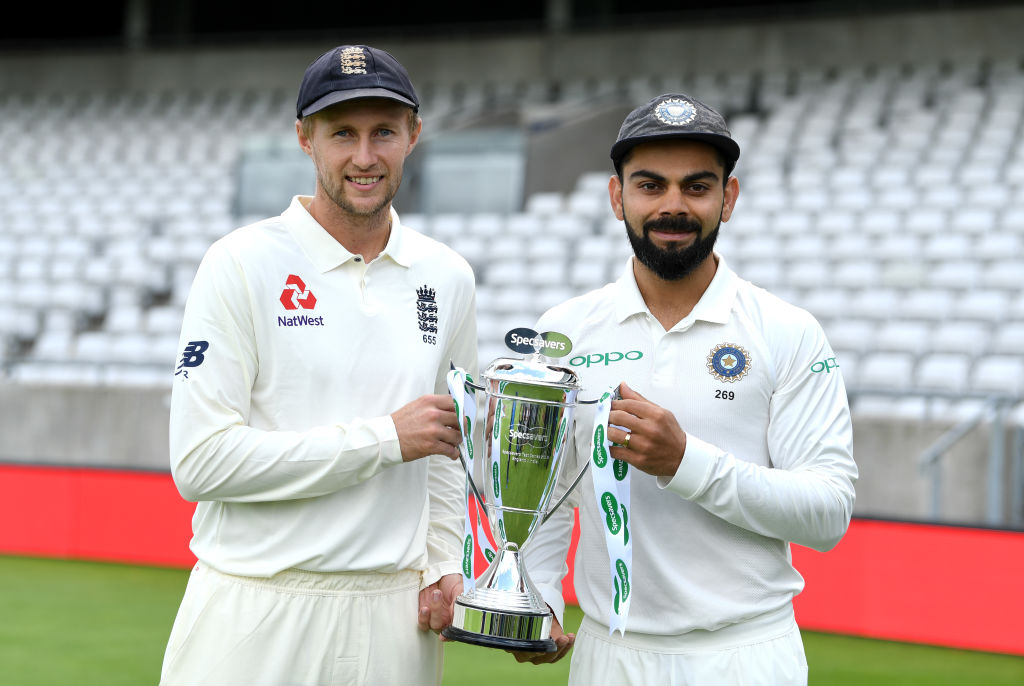India vs England | India’s keys to end a decade of English heartbreak

The pre-series press conferences have always been about chatter and punching jibes, but when Alastair Cook and Ajinkya Rahane will face the press, it has to be a normal one. But will it remain the same for the next seven weeks? Or India will find a way or two to silent the critics?
Virat Kohli will have some questions to answer once the Test series starts tomorrow in Edgbaston, but for sure, it will not be an easier proposition. However, India will have some clear-cut formulas to counter the English threat and here you go.
Rule #1
If India’s last tour to England is anything to go by, Virat Kohli is a weaker batsman when the ball swings away from him. In extremely conducive English conditions in 2014, Kohli’s attempt to play cover drives cost him time and again as he edged James Anderson four times, and once each to Stuart Broad and Chris Jordan. A lot has changed since then, but what has remained as it is Kohli’s struggle to counter the away-going deliveries. In the South Africa series and Sri Lanka series, he added that extra shuffle to his stride which helped him counter the outswingers a bit, but Vernon Philander and Suranga Lakmal nipped the ball back in to catch Kohli plumb in front of his stumps. These small issues can cost the Indian skipper when the ball is new and that’s why Indian top-order has a clear-cut job to protect him.
Since Kohli became India’s new No.4 after Sachin Tendulkar’s retirement from international cricket, India
At No.5 will bat Ajinkya Rahane, India’s premier overseas specialist. India's only win in their 13-Test run in England and Australia in 2014 and 2015 came on the back of a Rahane century on a green seamer at Lord’s. Once Rahane finds the ball old, one can almost always count on him.
Rule #2
Kohli was breathing fire. So were Ravichandran Ashwin and Ravindra Jadeja. India’s home dominance in 2016 and 2017 had a common theme attached to it. However, an often overlooked factor that contributed to India’s success was the contribution of the lower-order batsmen. Virat Kohli’s propensity to pick five bowlers in the team forced India to play the wicketkeeper Wriddhiman Saha and spin-bowling all-rounders R Ashwin and Ravindra Jadeja at Nos. 6, 7 and 8 respectively and as it turned out, the trio lived up to the billing.
To the lower-order batsmen's credit, India averaged a very impressive 34.52 per stand for Nos. 6 to 9 in this period and that included nine century and 23 half-century stands. India had their lower order to thank for decisively changing the fortunes of the matches in Kanpur and Kolkata against New Zealand, in Mumbai against England, and in Dharamsala against Australia.
Dinesh Karthik coming in for Saha could bolster the lower middle order big time and the team management will also be relying on the likes of Ashwin and Mohammed Shami to deliver to the best of their potential so as to drag the score forward.
Rule #3
Remember the stand of 198 runs between James Anderson and Joe Root in the Trent Bridge Test of 2014 which took the game away from India’s grasp? Anderson played excellent reverse sweeps, upper-cuts, and flourishing lofts over mid-on to wow the audience. India seemed to have
While DK or Rishabh Pant, whoever will be included, will strengthen the batting, it leaves them a bowler short. Depending on the team combinations, England could throw a 6,7 of Ben Stokes and Jonny Bairstow. India
Rule #4
Gone are the days when England used to field four proper pacers in the form of Matthew Hoggard, Steve Harmison, Simon Jones, and Andrew Flintoff in a single match. For the longest time, England have to be
As a matter of fact, since the Ashes whitewash of 2013-14, England have handed debut caps to as many as 10 fast-bowlers for the third seamer's position without any considerable success. If one player can claim to nail down the position with some amount of success, it is Chris Woakes. Apart from Woakes, Steven Finn, Jake Ball, Craig Overton, Mark Wood, and Toby Roland-Jones were called up to the
So, if India can attack the third seamer incessantly - be it Mark Wood or Porter or Curran or Woakes - Joe Root will have to continuously bring in either of his star bowlers to the attack. And considering both are grappling with injuries at the moment, India will be able to tear them once they get tired. A
Rule #5
If England’s recent records are anything to go by, they are one of the worst Test teams at the moment and it is not only because of their shambolic away performances. Since the beginning of the 2014 season, England
One of the major reasons that can be attributed to the performances can be Middle-order's exposure to the new ball. However, England
To go that, Joe Root, England’s answer to Virat Kohli, has failed to convert his starts to big scores and despite crossing the fifty-run mark in Tests more than anyone else since 2012, his conversion rate of 38% ranked joint-15th among 23 batsmen who had ten or more such innings. India